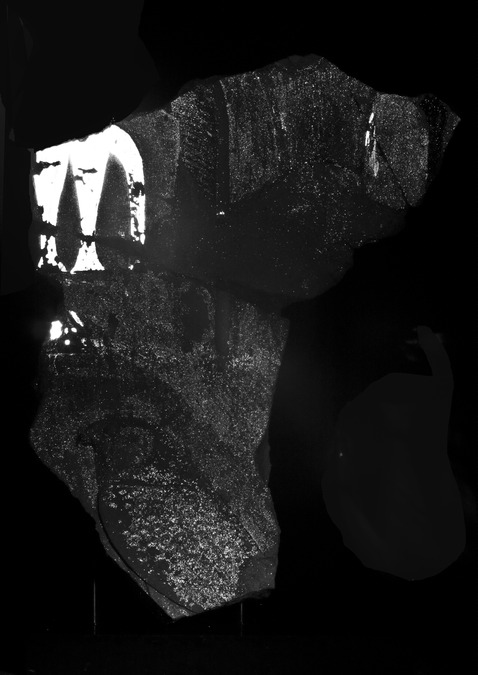Fragments of Relief
Summary
It was decided to take a closer look at the polychromy of this beautiful, well- preserved, Egyptian relief.. The investigation shows high technical painting skills. In particular, the pattern of feathers on the falcon which are simplified but at the same time meticulously and realistically painted with feathers that vary in size, making the feathers on the neck smaller than the rest of the plumage. The painting is applied in a thin layer of cream-coloured plaster mixed with Egyptian blue. Egyptian blue is also mixed with the green colour, on the plumage of the falcon to achieve a turquoise green colour. In some areas the red under drawing is still visible underneath the black contour line. The red underdrawing is characteristic of Egyptian art. The design is first painted with red and later corrected by the final drawing in black. .
Description of object
From the right to the left, the hieroglyphs on this fragment represent a wooden column, an animal-skin with a tail, a feather, three vases in a stand and half a loaf of bread. The relief has been put together from three large pieces.
Archaeological Commentary
The hieroglyphs in relief form part of the epithets of the Sun-God named Behdeti: “… the Great, He of the Spangled feathers, the First …”. It is not clear what role was played by the beautifully executed falcon below the hieroglyphs. Since it is not oriented in the direction in which the hieroglyphs are to be read it has no direct relation to the inscription The visible falcon had, however, to a great extent “multicoloured feathers”.
Choice of methods
Visual examination
- Macroscopic
- Microscopic in situ
Technical imaging
- UV
- VIL
- IR
Sampling
- Cross section
Visual examination
The paint has been applied on a thin layer of cream-coloured plaster. The column is brown, the animal-skin has a wide band of green dots, the feather is green with dark barbs, the vases are blue, as is the half loaf of bread. The falcon beneath the insciption has green feathers on its body, green markings on its face and a green beak. Traces of a red under- drawing are visible in several places.
Microscopic in situ shows small grains of blue on the background and on the feathers of the falcon.
Technical imaging
UV-FL: The UV-FL-image distinguish the difference between original material and subsequent restorations. The imaging does not show fluorescent phenomena related to organic lakes or resins. However, a white substance covers the brown column on the right side of the relief. The white layer remains so far unidentified.
VIL: The blue found in various locations is identified as Egyptian blue by the VIL-imaging. On the background the pigment is, present on the surface as scattered particles but in some places it is more concentrated as observed on the background next to the animal-skin. Scattered particles are also observed glowing bright white on the plumage of the falcon. The three vases and the half a loaf of bread reveal a strong luminescence emitted by Egyptian blue.
IR: The IR- image of the falcon makes the drawing of the pattern of feathers stand out more clearly
Other types of investigation
Sampling A sampling strategy was developed on the basis of the preliminary investigation. One small sample is taken of the green from the hieroglyph representing a feather and later prepared for cross section and subsequent analysis in order to identify the green pigment.
Bibliography
M. Jørgensen (2009), Catalogue Egypt IV Late Egyptian Sculpture 1080 BC-AD 400. Ny Carlsberg Glyptotek, Copenhagen, cat. No. 26.2. p. 93
C. Brøns, K. Lund Rasmussen, M. Melchiorre di Crescenzo, R. Stacey, A. Lluveras-Tenorio (2018) Painting the Palace of Apries I: Ancient binding media and coatings of the reliefs from the Palace of Apries, Lower Egypt, Heritage Science 6:6 “https://heritagesciencejournal.springeropen.com/articles/10.1186/s40494-018-0170-9”:
S. Hedegaard, T. Delbey, C. Brøns, K. Rasmussen, Painting the Palace of Apries II: ancient pigments of the reliefs from the Palace of Apries, Lower Egypt. Heritage Science. 7 (2019), doi:10.1186/s40494-019-0296-4.
- ÆIN 1048
- Relief
- 589-568 B.C.E.
- Classical
- Limestone
- Acquired in 1909 from W.M.F Petrie's excavations at Memphis.
- H. 39 cm.; W. 28 cm.; D. 6 cm.










